Teats and Specialised Bottles Parent Information Guide
When choosing a teat, consider: Size, Shape, Material, and Flow rate
Teat choice should depend on your child’s needs and abilities. It is not necessarily the case that you progress through teats according to the age ranges specified on the pack, particularly if your child has difficulty feeding. If the teat works for your child – stick with it.
If your child is having feeding difficulties, a Speech Pathologist or Child and Family Health Nurse can help to decide which teat best suits your child.
Here are a few examples of teats:
Standard teat e.g. Avent, Tommee Tippee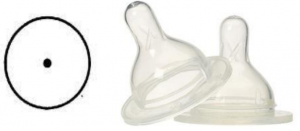
- Hole at tip of the teat
- Some milk will drip out of teat, even when not sucked
- Provides midline stimulation of tongue
- Flow rates vary, the labelling of flow rates varies between different manufacturers.
- Suitable for babies with normal oral and swallowing skills
- Wide or standard base
Orthodontic teat e.g. Nuk and Pur brands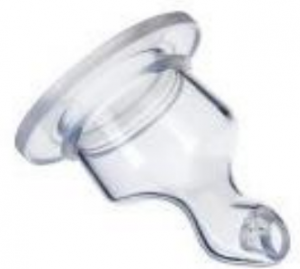
- Hole on the curved face at the top of the teat
- Place the hole against the palate
- Some milk will drip out of teat, even when not sucked
- Breast fed babies or hypersensitive babies may prefer the shape of this teat
- Slow, medium, and fast flow rates
Variable flow e.g. Bebelle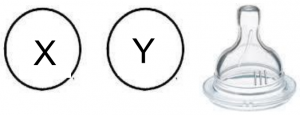
- Larger cross-cut or Y-cut at tip of the teat
- Flow rate depends on baby’s sucking and the position of the teat in the baby’s mouth
- Requires less effort than chu chu cross cut teat
- Milk can drip into mouth
- Suitable for thickened feeds or for older children
Peristaltic teat e.g. Pigeon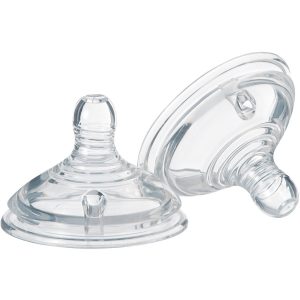
- More elastic than a standard teat
- Ridges inside teat to stimulate a stripping tongue action when sucking
- Does not provide as much midline tongue stimulation as standard teat
- Babies who normally breast feed may prefer this teat
- Wide or standard base
- Super Slow, Slow, medium, and fast flow rates, and Y cut
Pigeon Cleft Palate teat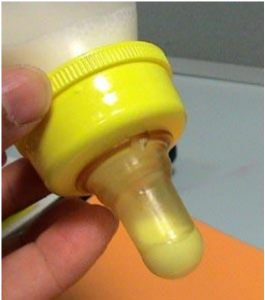
- More rigid on upper surface, resting against the palate
- The white valve prevents milk flowing back into the bottle from the teat during sucking and reduces the intake of air.This valve is an important component of the teat.
- May be used in conjunction with a squeeze bottle or standard bottle
- Available through CleftPALS (www.cleftpals.org.au) and Havenhall (02 9316 9810)
Cross-Cut teat e.g. Chu Chu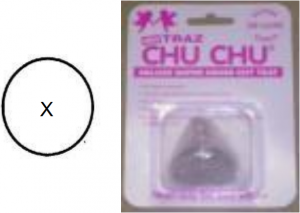
- Small cross at tip of the teat
- Milk does not drip into mouth
- Flows only when baby sucks
- Provides midline stimulation of tongue
- Requires more effort during sucking than a standard or orthodontic teat
- Suitable for babies with a good suck but with difficulties swallowing
Medela Special Needs feeder (previously known as Haberman)
- Designed for babies with weak sucking but good swallowing skills eg babies with a cleft lip and/or palate
- Slit-cut teat allows the flow to be varied from slow to medium to fast. This is controlled by the person feeding the baby.
- The white valve prevents milk flowing back into bottle. This valve is an important component of the teat.
- The teat can be squeezed to assist infants with weak sucking to draw milk from the bottle but should be squeezed only in conjunction with the rhythm of the baby’s sucking
- Mini teat or standard teat size available
- Available from Chemists or Purchase online(www.okme.com.au/medela-special-needs-feeder.html)
july 2016Speech Pathology Department,The Children’s Hospital at Westmead
Teats and Specialised Bottles Parent Information Guide – Teats and Specialised Bottles Parent Information Guide –
[xyz-ips snippet=”download-snippet”]

